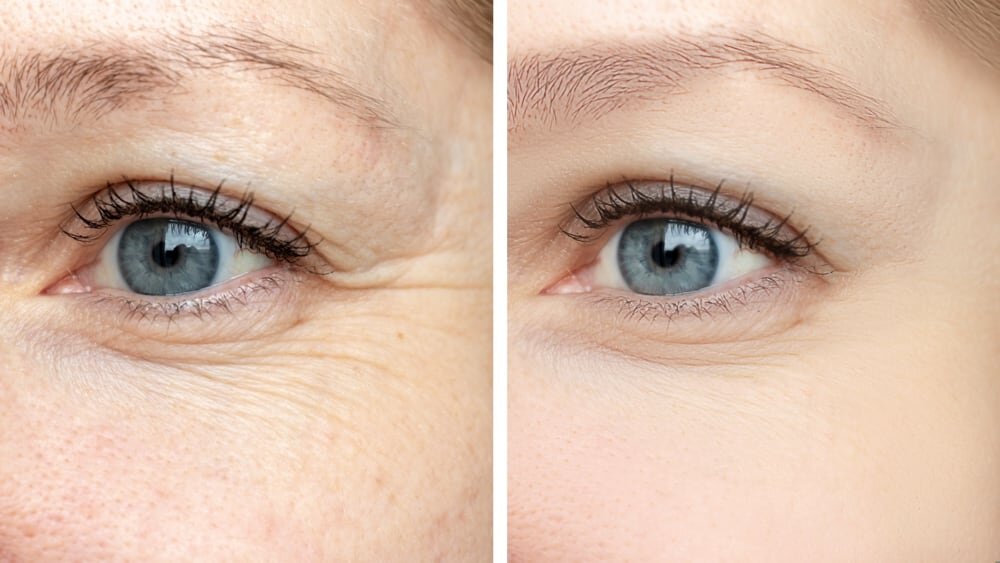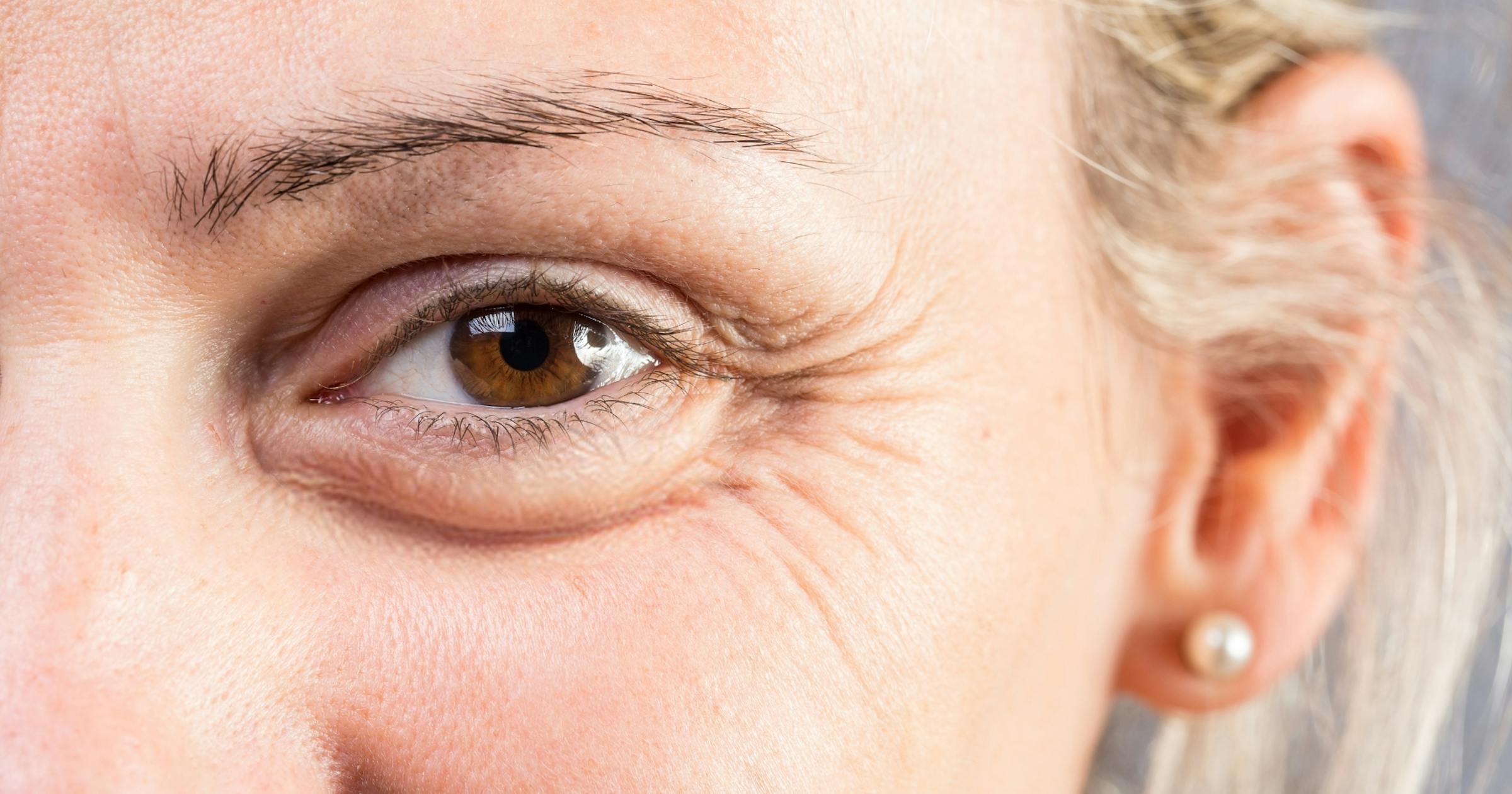Crow’s Feet Begone: How Botox Transforms Eye Area Wrinkles
Crow’s feet, those fine lines radiating from the corners of the eyes, are among the earliest signs of aging, often appearing in one’s 30s or 40s due to repeated squinting, smiling, or sun exposure. These dynamic wrinkles can make the face appear tired or older, prompting many to seek non-surgical solutions. Botox, a purified form of botulinum toxin type A, has become a go-to treatment for smoothing crow’s feet, offering quick results with minimal downtime. By using 6–15 units per side at a cost of $120–$450, Botox not only erases these lines but also provides subtle aesthetic benefits like brow lifting. This article explores how Botox transforms the eye area, what patients can expect during treatment, and real-life testimonials that highlight its impact in 2025.
Understanding Crow’s Feet and Botox
Crow’s feet form when the orbicularis oculi muscle, which encircles the eye, contracts during facial expressions, creasing the delicate skin around the eyes. Over time, these lines deepen due to collagen loss and repetitive muscle movement. Botox works by temporarily blocking nerve signals to this muscle, preventing contractions and smoothing existing wrinkles while preventing new ones from forming. Approved by the FDA for crow’s feet in 2013, Botox is now one of the most popular cosmetic treatments, with over 7 million procedures performed annually in the U.S., according to the American Society of Plastic Surgeons.

Treating crow’s feet typically requires 6–15 units of Botox per side, depending on the severity of wrinkles and muscle strength. At an average cost of $10–$15 per unit in 2025, patients can expect to pay $120–$450 for both sides, with costs varying by location (e.g., higher in urban centers like New York or Los Angeles) and provider expertise (board-certified dermatologists versus medspas). The procedure’s affordability and effectiveness make it a compelling choice for those seeking a refreshed appearance without surgery.
Read more: Rinvoq and Velsipity: What Seniors Need to Know About New UC Treatments
How Botox Reduces Crow’s Feet
Botox is administered via small injections into the orbicularis oculi muscle, targeting specific points around the outer eye to relax the muscle without affecting overall facial movement. A typical treatment involves 3–5 injection sites per side, using a fine needle to minimize discomfort. The process takes 10–15 minutes, with results appearing within 3–7 days and peaking at 2 weeks. Effects last 3–4 months, though some patients report up to 6 months with consistent treatments, as muscles adapt to reduced movement.
The dosage is tailored to each patient. For mild crow’s feet, 6–8 units per side may suffice, while deeper lines or stronger muscles may require 10–15 units. Providers often use a conservative approach to avoid over-treatment, which can lead to a “frozen” look or drooping eyelids. Skilled injectors map the face to ensure precise placement, preserving natural expressions while smoothing wrinkles. Before-and-after photos often show a dramatic reduction in lines, with the skin appearing tighter and the eye area brighter.
Benefits Beyond Wrinkle Reduction
Botox for crow’s feet offers aesthetic benefits that enhance the overallទ
System: eye area’s appearance:
-
Subtle Brow Lifting: By relaxing the orbicularis oculi muscle, Botox can slightly elevate the outer brow, creating a more open, youthful look. This effect is subtle but complements the wrinkle-smoothing results, enhancing the overall facial harmony.
-
Brighter, More Youthful Eyes: Smoothing crow’s feet opens up the eye area, making it appear larger and more vibrant. Patients often report looking “refreshed” or “well-rested” after treatment.
-
Preventive Effects: Regular Botox treatments can slow the formation of new wrinkles by limiting muscle movement, helping maintain smoother skin over time.
-
Minimal Downtime: The procedure requires no recovery time, allowing patients to resume normal activities immediately, making it ideal for busy individuals.
-
Customizable Results: Providers can adjust the dosage and injection sites to achieve a natural look, avoiding the overly smooth appearance some fear.
Read more: Eating Smart: A Nutrient-Focused Diet to Manage Diabetes, High Blood Pressure, and Kidney Disease
What to Expect During Treatment
The Botox procedure is straightforward and patient-friendly, especially for seniors or those new to cosmetic treatments. Here’s a step-by-step overview of what to expect:
-
Consultation: The provider assesses the patient’s crow’s feet, discusses goals, and determines the appropriate dosage. They may review medical history to ensure Botox is safe, checking for conditions like neuromuscular disorders.
-
Preparation: The eye area is cleaned, and a topical numbing cream may be applied, though most patients find the injections tolerable without it. The provider marks injection sites for precision.
-
Injection: Using a fine needle, the provider injects small amounts of Botox into the targeted muscles. Patients may feel a slight pinch or sting, but discomfort is minimal and brief.
-
Post-Treatment Care: Patients are advised to avoid rubbing the treated area for 24 hours to prevent Botox from spreading to unintended muscles. Strenuous exercise, alcohol, and heat exposure should be avoided for a day to minimize bruising.
-
Results and Follow-Up: Initial effects appear within 3–7 days, with full results visible by 2 weeks. A follow-up appointment may be scheduled to assess outcomes and make minor adjustments if needed.
Side effects are rare but may include mild bruising, swelling, or headache, typically resolving within days. Serious complications like eyelid drooping (ptosis) are uncommon (less than 1% of cases) when performed by an experienced provider.
Cost and Accessibility
The cost of Botox for crow’s feet ranges from $120–$450 for 12–30 units (6–15 units per side), depending on the provider’s expertise and location. Board-certified dermatologists or plastic surgeons may charge $12–$20 per unit, while medspas often offer rates as low as $8–$12 per unit. Many clinics provide package deals, especially for repeat treatments, reducing costs by 10–15%. To find a provider, patients can search for “Botox injection near me” online or consult directories like the American Academy of Dermatology for certified professionals.

In 2025, Botox’s accessibility has grown, with many dermatology clinics, medspas, and even some primary care offices offering the treatment. Urban areas like Miami or Chicago have abundant options, while rural areas may require travel to a certified provider. Patients should verify the provider’s credentials and experience to ensure safety and optimal results.
Patient Testimonials
Real-life experiences highlight Botox’s transformative impact on crow’s feet and patient confidence:
-
Susan, 52, Chicago: “I started noticing crow’s feet in my late 40s, and they made me look tired. My dermatologist recommended 10 units of Botox per side, and within a week, the lines were nearly gone. I love how my eyes look brighter, and the slight brow lift was a bonus! The injections were quick, and I was back to work the same day.”
-
Michael, 47, Miami: “As a guy, I was hesitant about Botox, but my crow’s feet were deepening from years in the sun. I got 8 units per side for $200, and the results were subtle but amazing. Friends said I looked refreshed but couldn’t tell why. I go every 4 months now, and it’s worth every penny.”
-
Linda, 65, Seattle: “At my age, I thought wrinkles were inevitable, but Botox changed that. After 12 units per side, my crow’s feet softened dramatically, and my face looks younger without looking ‘done.’ The process was painless, and I felt confident going out without makeup for the first time in years.”
These testimonials reflect the satisfaction and confidence boost that Botox provides, particularly for those seeking subtle, natural results.
Why Botox Stands Out in 2025
Botox remains a leading choice for crow’s feet due to its proven safety, efficacy, and versatility. Unlike fillers, which add volume to deep lines, Botox targets dynamic wrinkles caused by muscle movement, making it ideal for crow’s feet. Its non-surgical nature and quick results appeal to seniors, professionals, and first-time patients alike. In 2025, advancements like improved injection techniques and AI-assisted facial mapping enhance precision, ensuring natural outcomes.

Compared to alternatives like laser resurfacing or chemical peels, Botox offers faster results with less downtime. While lasers can improve skin texture, they require multiple sessions and weeks of recovery, whereas Botox delivers results in days with no healing period. For deeper crow’s feet, some patients combine Botox with fillers or skin-tightening treatments for enhanced results, a trend growing in popularity.
Risks and Considerations
Botox is FDA-approved and safe when administered by a qualified provider, but risks exist. Over-dosing can cause a “frozen” look or eyelid drooping, though these are rare with proper technique. Seniors with weaker skin elasticity may need lower doses to avoid unnatural results. Patients should disclose medications (e.g., blood thinners) or conditions (e.g., myasthenia gravis) that could increase risks.
Maintenance is required every 3–6 months, as Botox effects wear off. Regular treatments can lead to longer-lasting results over time, as muscles weaken with repeated relaxation. Patients should budget for ongoing costs, though package deals and loyalty programs can reduce expenses.
The Future of Botox for Crow’s Feet
In 2025, Botox continues to evolve with innovations like longer-lasting neuromodulators (e.g., Daxxify, lasting 6–9 months) and micro-Botox techniques for finer lines. Clinics are also adopting subscription models, offering monthly payment plans for regular treatments, making Botox more affordable. Before-and-after photos shared on platforms like Instagram showcase dramatic transformations, driving demand among younger patients seeking preventive Botox to delay crow’s feet formation.
Conclusion
Botox is a game-changer for eliminating crow’s feet, offering a quick, effective solution with 6–15 units per side at $120–$450. Its ability to smooth wrinkles, subtly lift brows, and brighten the eye area makes it a favorite for those seeking a youthful, refreshed look. With minimal downtime, customizable results, and high patient satisfaction—as evidenced by testimonials—Botox remains a top choice in 2025. By choosing a skilled provider and following post-treatment care, patients can enjoy natural, long-lasting results that enhance their confidence and appearance. For anyone tired of crow’s feet, Botox offers a proven path to a brighter, smoother eye area.
DEALS DELIVERED TO YOUR INBOX.
Subscribe now for top-notch shopping & Investing advice. Receive hot Vouchers into your wallet
By submitting your information you agree to the Terms & Conditions and Privacy Policy
Related Articles

Seasonal Winter Cocktails to Warm Your Spirits
.png)
Where Tradition Meets Sophistication: The Old Fashioned Reimagined

The Best Black Friday Furniture Sales and Deals of 2024

Bake Up Fall with These 10 Easy Pumpkin Cream Cheese Muffin Recipes for 2025 – Try Them Now!

How to Find the Best Coupons for Halloween 2024

Black Friday Bed Sheets Sales 2024: Best Deals, Top Brands & Tips
Popular Brands
View all
Vestinda
5 Coupons Available

Hairguard
3 Coupons Available

Typli.ai
10 Coupons Available
Seasonality.ai
5 Coupons Available

Fevi Fitness
5 Coupons Available

Betolimp
5 Coupons Available
Popular Articles
View all
Sweeten Your Autumn with These 10 Cozy Fall Dessert Recipes for 2025 – Bake Them Now!
.png)
Top 16+ Ideas for Winter skirt outfit with boots

Ink & Incantation: Magic Spellbook Tattoo Designs for the Wandering Witch and Arcane Artist

The Iconic Caesar Salad: How to Make the Creamiest, Dreamiest Classic at Home

Cyber Monday Shopping Tips and Tricks
.png)
Verdant Vibes: 15 Irresistible Green Juice Recipes to Ignite Your Wellness Journey
LATEST

Last updated: Sep 9, 2025

Last updated: Jun 17, 2025

Last updated: Jun 26, 2025

Last updated: Jun 10, 2025

Last updated: Jun 21, 2025

Last updated: Apr 29, 2025
